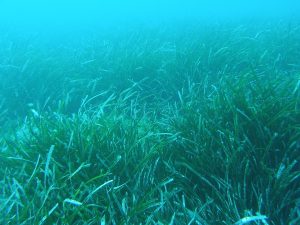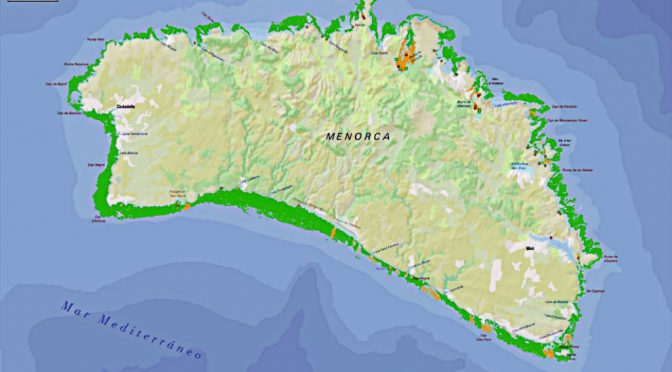Views: 200
Posidonia has been protected since 1992, but, even so, it has continued to suffer from various adverse impacts on it which have reduced its colonies. Now with the recent approval of the Balearic Government decree on its conservation, we have more tools with which to make effective protection. If we see boats anchored over posidonia we can phone 112 so that the mechanisms of surveillance and sanctions can be activated as stipulated by the new regulations.
It is posidonia which gives us the beaches and the wonderful marine landscapes we are able to enjoy on the island. This plant is the base of an ecosystem in which lots of other species live, it looks after fish of economic importance, it establishes the sand on our beaches, it cleans the water and captures CO2. The remains of the posidonia help to contain the sand on the beaches, and help protect the dunes by reducing erosion from storms as well as carrying nutrients for their ecosystems. Posidonia, therefore, is one of the most important strategically environmental and economic resources that we have. On it depends the marine environment, fishing and tourism. Nearly everything.

Posidonia is a plant which lives for many centuries, creating large areas known as meadows. However, it also grows very slowly, about one meter every hundred years, and does not live much beyond thirty metres deep. So, the extent of posidonia that we have is reduced to a narrow ring around the coast and it can be said that the attacks it receives are not recoverable within a human time scale. For this reason it is so important to act on any occasion when we see some negative impact on this plant.
Scientific research is finding that the posidonia meadows of Menorca are degrading. From a global high level of conservation we have passed to an alarming state of noting a negative impact on areas where boats anchor. We should be aware that with the great increase in the boating sector of Menorca we cannot continue as before without bothering about anchoring behaviour. It is the nautical sector that should have the highest interest in adopting measures to reconcile its sport with the protection of the marine environment and, therefore, maintain the future of its activity. It is surprising to hear from companies and representatives of boating associations that are against the approved decree.
We are the first to admit that not everything is being done. The resources of monitoring and penalties need to be made better. The mapping of the posidonia meadows should be improved as well as all the equipment required to help the boating community comply more easily with the regulations. But these shortcomings are not excuses for delaying the urgent action needed for protecting posidonia. It is sufficient to look over the side of the boat to know if there is or is not any posidonia. Mapping can help but it is not absolutely essential for deciding where to anchor.
We think that everyone at the heart of boating can help to make the protection of this essential plant more effective. When we sail we can keep an eye out for posidonia. If we see someone who has anchored badly, let them know, in case they do not know of the problems and the regulations. And remember that it always possible to phone 112 about someone anchoring over posidonia to activate the mechanisms for monitoring and penalties.
The future of posidonia is the future of us all.

